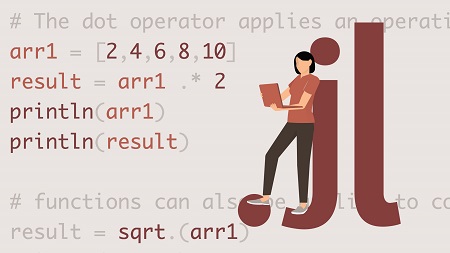
English | MP4 | AVC 1280×720 | AAC 48KHz 2ch | 2h 19m | 388 MB
Julia is an increasingly popular programming language that combines the power and flexibility of Python with the speed of C—making it an attractive option in fields like data science and financial modeling. In this course, Joe Marini introduces the Julia programming language, covering its syntax, basic concepts, and features. Joe begins by going over the language’s feature set, explaining how it differs from other languages. Next, he goes over data types, numbers, and strings in Julia; language features such as data type casting; and control and data structures. At the end of the course, you’ll be ready to install and run Julia and write code using the language’s features.
Topics include:
- Using the Julia REPL tool
- Differences between Julia and other languages
- Variables and data types
- Numbers in Julia
- Defining and operating on strings
- Using built-in functions in Julia
- Conditional statements
- Using array functions
- String processing
Table of Contents
Introduction
1 Julia Power like Python speed like C
2 What you should know
3 Setting up the development environment
Overview
4 Introduction to Julia
5 The Julia REPL
6 Building HelloWorld.jl
7 Differences from other languages
Language Basics
8 Julia variables and data types
9 Numbers in Julia
10 Strings in Julia
Language Features
11 Built-in functions
12 Vectorization operator
13 Data type casting
Control Structures
14 Conditional statements
15 Loops
16 Functions
17 Exception handling
Data Structures
18 Arrays
19 Tuples
20 Sets
21 Dictionaries
Julia Features
22 Random numbers
23 String processing
24 Using the filesystem
25 Dates and times
26 Custom types
27 Sorting data
Conclusion
28 Next steps
Resolve the captcha to access the links!